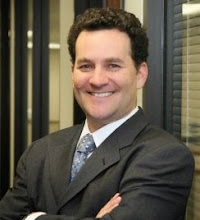What can an experienced, real-world mediator learn from an ivory tower political science professor? Surprisingly, the answer may be, "Plenty."
I recently met UCLA political science professor Barry O'Neill, who uses game theory to analyze international relations and who also has an interest in mediation. Professor O'Neill has written a paper - still in draft from - entitled "
What Can a Powerless Mediator Do for Strategic Negotiators?" O'Neill may underestimate the power that mediators have generally, but even so he demonstrates a number of important points that mediators and negotiators should consider.
O'Neill asks readers to consider a "powerless" mediator who "has no means to coerce or bribe the parties or any special information to give them. Further, the mediator is dealing with negotiators who are foresighted and strategically pursue fixed goals, so that the mediator's problem-solving ability, personal persuasiveness or charisma add nothing."
O'Neill then demonstrates mathematically that such a "powerless" mediator still can add value to a negotiation. Such a mediator can focus the parties' attention on an existing strategy for resolution, or what game theorists call an
equilibrium; help the parties resolve issues and save face by initiating compromises that the parties themselves may not want to risk initiating; and reduce each party's risk in exploring common interests.
Here's the rub: good mediators in the real world do in fact perform these functions.
First, experienced negotiators and mediators frequently can tell fairly early in a negotiation where it is going to end. In other words, they can see the best strategy for each side to use given the strategy being used by the other side, and they can see these strategies through to the point of resolution. This may be intuition, or it may be evidence of the mathematical equilibria for which game theorists search.
Good mediators not only can see the solution, but also can lead the parties through the negotiation to that solution. In plain English, good mediators helps the parties discover solutions that are already there.
Second, most if not all parties enter negotiation with the fear that they will give too much or leave value on the table. In litigation, the attorneys frequently have another layer of fears. Not only do they fear that the other side will try to take advantage, but they also fear that their own clients will see them as weak and incompetent if they seem too willing to compromise. For attorneys, negotiation frequently means fighting a war on two fronts.
Of course, good mediators understand this. They do not just act as messengers of the parties' respective positions. Instead, they initiate and advocate for compromises that the parties themselves may not want to initiate, thus allowing the parties to save face when called upon to make concessions. By initiating and advocating for compromise, good mediators also allow the attorneys to save face with their clients. An attorney who wants a case to be resolved but needs to save face with the client can count on a good mediator to read the situation and act accordingly.
Similarly, good mediators help the parties explore their common interests without losing face. In situations where mutual gains can be achieved through cooperation - and not all cases fit this model, as I discussed
here - good mediators will work with each party to explore options in private session. Further, good mediators will present such options as mediator's proposals when the parties are not willing to risk presenting such options as their own.
"But all mediators know these things, dont they?"The most important lesson from O'Niell's paper is one that he does not state explicitly, but that many experienced negotiators will recognize: Far too many of us professional mediators think too highly of our mediation "powers" and would do well to get back to the basics suggested by O'Neill. An example:
Not long ago, I represented one of the parties in a mediation with a very well-known, very successful mediator. As frequently occurs, the parties disagreed on a factual issue. What was unusual was that the mediator insisted that we resolve the issue before we moved forward. I explained repeatedly that my client and I were not particularly interested in the issue and that we wanted to work on getting to a settlement done. He insisted that his mediation "style" was to explore all such issues before talking numbers. He told us that he could not go forward without resolving the issue and asked the parties to return for another session once they had produced evidence to support their positions. Since the mediator would not go forward, we left, and it goes without saying that we did not return for a second session.
What compelled this highly respected mediator to put his mediation "style" ahead of the parties' need to resolve the case? I do not believe that the mediator simply wanted to earn more fees for a second session. I believe that the mediator had become too enamored of his own "style" and his own "power."
Everyone who mediates professionally should consider the lessons learned from O'Neill's hypothetical "powerless" mediator: that good mediators can add value not by imposing their own wills or personalities on the negotiation, but by focusing the parties' attention on existing strategies for resolution, by exploring common interests in separate sessions that the parties may not be willing to explore with each other, and by initiating and advocating for compromises that the parties may not be willing to risk initiating themselves.

